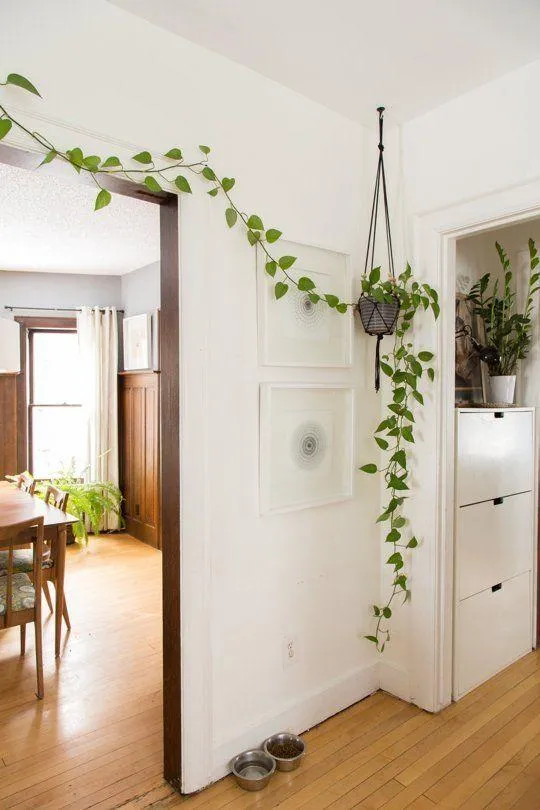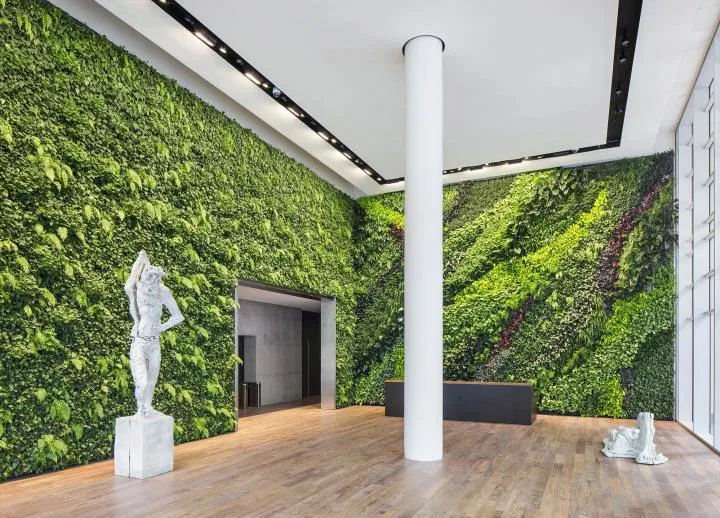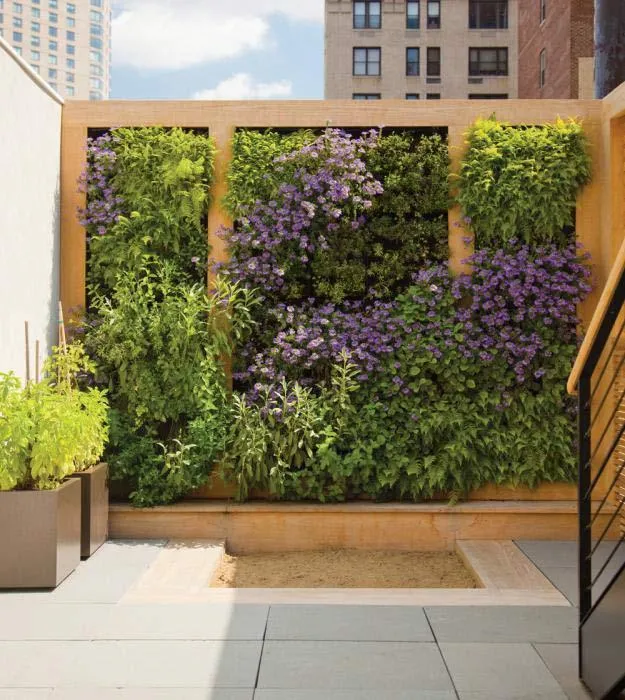Everything You Need to Know About Using Indoor Plants to Decorate Your Walls
If you’re looking for creative ways to add greenery to your home without taking up precious floor space, wall-mounted indoor plants are a fantastic solution. In this article, I’ll cover all the basics of selecting, caring for, and arranging wall plants so your space feels lively and nature-inspired. By the end, you’ll have everything you need to transform your walls into your own indoor botanical garden!
Choosing the Right Plants
The first step is selecting plants that will thrive when planted upright against a wall. From my experience helping customers decorate with greenery, here are some top options:
- Pothos – One of the hardiest and easiest indoor plants. its trailing vines look beautiful cascading down a wall. Just give it bright, indirect light.
- Philodendron – With their heart-shaped leaves, philodendrons add lush fullness. They too prefer indoor conditions and bright light.
- Spider plant – Its long, grass-like leaves spill over walls beautifully. Plus, spider plants are virtually impossible to kill.
- Purple waffle plant – The geometric pattern of its waffle-like leaves stands out beautifully on walls. It tolerates lower light.
- English ivy – Its tendrils cling tightly as it climbs upward on a wall. Great for hiding unsightly spots.
When selecting plants, make sure to choose varieties suited to your home’s light levels. Too much sun or shade and your wall greenery may struggle.
Preparing Your Walls
Once you’ve picked out your plants, it’s time to get your walls ready. The best method is mounting small plant shelves or racks made for indoor plants.
- Mount the racks 6-12 inches from the wall using anchoring hardware appropriate for your wall material.
- Space the racks 8-12 inches apart vertically to give room for your plants to grow. Arrange bigger plants on lower shelves.
- Consider adding small hooks or ties between shelves to allow trailing plants room to cascade down.
Alternatively, for small plants you can use sticky putty or removable mounting strips. Just be sure the wall surface can securely hold plant weight with moisture.

Caring for Wall Plants
Once your wall garden is installed, proper care is key to keeping it thriving:
- Water whenever the top inch of soil is dry, usually every 7-10 days. Use a turkey baster to deliver water precisely.
- Mist regularly to increase humidity loving plants like ferns and orchids thrive.
- Fertilize monthly in the growing season with a diluted liquid houseplant food.
- Prune off any dead or damaged growth to keep plants looking full and perky.
- Rotate plants periodically to ensure even light exposure.
- Address any pests promptly to avoid an infestation.
With a little TLC, your wall greenery will add ambiance for years to come. Don’t be afraid to experiment with different arrangements until you find the look you love.
Arranging Your Wall Garden Design
Here are some ideas for styling your plantings attractively:
- Start with a focal plant positioned in the center, then build out outward.
- Alternate trailing and upright varieties for visual depth and flow.
- Consider mounting a tall sculptural plant to anchor a corner.
- Use a mixed-height arrangement for visual interest.
- Hang some vines or trailing plants to bridge gaps between walls.
- Add decorative pots, planters or props for more style.
Stepping back periodically helps you view the overall balance. Basically, let your creativity shine! A wall garden can totally refresh a space.
Dealing With Issues
No wall planting is flawless, so here are tips for common hitches:

- If a plant isn’t thriving, give it more appropriate conditions or replace it.
- Use vine clips, ties or training to corral rampantly growing plants.
- Address any pests like mealy bugs or spider mites right away.
- For areas with direct sun, try shade-loving ferns or begonias instead.
- Hide wall flaws or tricky areas with foliage plants or trellises.
- Prune away any leaves turning brown from low humidity or dry air.
By watching your wall garden closely and making minor tweaks, you can solve emerging issues before they become problems. With wall plants, beauty really is in the details.
Inspiration and Variations
There are endless possibilities beyond basic vertical planters too:
- Fill shadow boxes or picture frames with moss and succulents.
- Grow air plants in floating wall shelves or mounted bromeliad boats.
- Poke trailing plants out of holes in decorative boards.
- Use living walls system with felt pockets for wall-mounted gardens.
- Dangle planters from chains, twine or picture wire for flowing looks.
- Get festive with garlands of ivy, eucalyptus or tropical flowers.
So whether you want a simple botanical accent wall or go all out with a full-fledged wall ecosystem, there are endless possibilities to enliven your space with green.
I hope this guide has given you some ideas to start planning your own wall indoor plant garden. Please let me know if you have any other questions – I’d be happy to help further! With some inspiration and care, your plants are sure to thrive.
Factors to Consider When Choosing Indoor Wall Plants
| Plant | Light Needs | Water Needs | Size | Care Level |
|---|---|---|---|---|
| Pothos | Low | Moderate | Small to Medium | Easy |
| Spider Plant | Low to Medium | Moderate | Small | Easy |
| Philodendron | Low to Medium | Moderate | Small to Large | Easy |
| English Ivy | Low to Medium | Moderate | Small to Large | Easy |
| Peace Lily | Medium | Moderate | Medium | Easy |
| Snake Plant | Low | Low | Medium to Large | Very Easy |
FAQ
-
Why do plants need sunlight?
Plants basically need sunlight to perform photosynthesis, which is the process where they use the sun’s energy to transform water and carbon dioxide into oxygen and food. So sunlight is essential for their growth and survival.

-
Do all indoor plants need direct sunlight?
Not necessarily. Some indoor plants can get by with just indirect sunlight from a window. Things like pothos and snake plants seem to do okay even in not very bright areas. But other plants like scheffleras appear to do best with at least a few hours of direct sun each day.
-
How often should indoor plants be watered?
The frequency of watering can vary a lot depending on the type of plant and growing conditions. A good rule of thumb is to only water when the top soil feels dry to the touch. Some that need less water may only need it once every couple of weeks, while others could be weekly or even more in the summer. The old “stick your finger in the soil” test always works well.
-
What are some low maintenance indoor plants?
Plants that don’t require a ton of care would include spider plants, pothos, snake plants and zz plants. These kinds are remarkably hardy and forgiving of the occasional dry spell. Peace lilies and English ivy also seem to be fairly tolerant of less than perfect care. However, plants still need at least some water and occasional fertilizer to stay looking their best.
-
When should plants be repotted?
Most indoor plants will likely need a larger pot within a year or two of growing in their original container from the store. Signs it’s time for a repot include roots growing out the drainage holes or soil that seems terribly compressed. Spring is generally a good time to do it so the plant has plenty of growing season left to establish in its new home. But fall works too if done early enough for the roots to get established before a dormant period.
-
What are some common pests on indoor plants?
Pests to watch out for include spider mites, scale, and mealybugs. These tiny bugs basically suck the juice out of plant leaves and stems. Aphids are also a pesky one. If you spot them, it might mean your plant is too dry, overwatered, or needing a good dusting. Inspect leaves often because early detection makes treatment much easier. Some people swear by neem oil or insecticidal soaps for natural pest control.

-
Is it bad to move plants a lot?
Frequent rearranging of indoor plants can sometimes stress them out unnecessarily. Unless they get kind of leggy and need a trim, it’s best to leave them alone and let them focus on growing. Kind of like with us, consistency and stability are more relaxing for plants. There’s no need to constantly shift them to different spots. Find a place where they’ll get the needs they require – sun, moisture, etc. – and let them establish roots for awhile. Consistency equals content plants!
-
“What can go wrong with indoor plants?”
While plants are pretty resilient, sometimes things don’t pan out no matter our best intentions. Plants can drop leaves or even die off for reasons like underwatering, overwatering, pests, temperature shock from drafts, not enough sun, or nutrient deficiencies in nutrient-poor water or soil. Sometimes the cause is a mystery. Experts suggest a little research can help ID issues before they spiral. But even then, a plant’s fate could be basically out of our hands for unknown reasons. Such is life with our living plant buddies!
